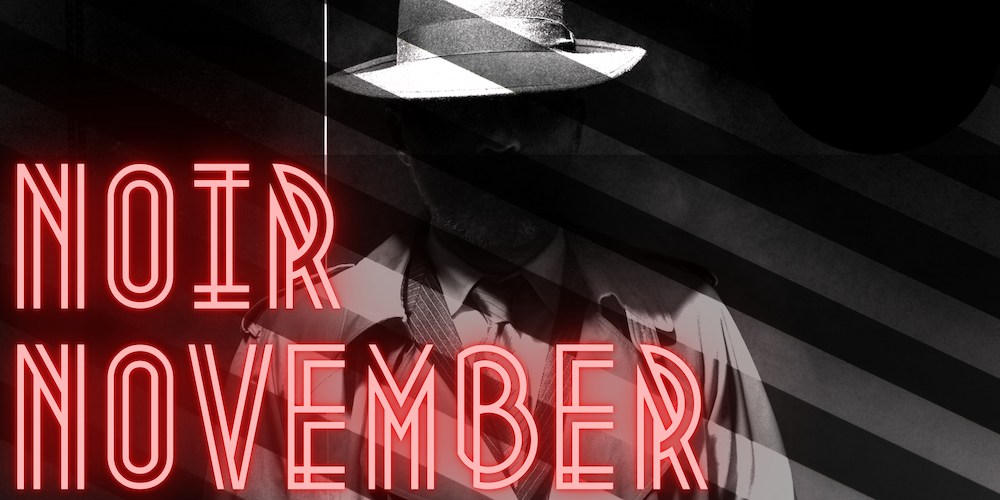Noir November: Devil in a Blue Dress
Written by Cameron Geiser
Every day for the month of November, Cameron Geiser is reviewing a noir film (classic or neo) for Noir November. Today covers Carl Franklin’s Devil in a Blue Dress.
Filmed in the mid-nineties but set during the post-war forties of Los Angeles, Devil in a Blue Dress is classic Noir as a period piece with a focus on the Black America of that time and place. Denzel Washington stars as Ezekiel ‘Easy’ Rawlins, a newcomer to the criminal underworld of Noir. As an adaptation of Walter Mosley's first novel following the ‘Easy’ Rawlins character we’re introduced to him as he begins his descent into a world of blackmail, bribery, corruption, and murder. All because he lost his job and needed to pay the mortgage bill.
Knowing of his financial troubles, Easy’s friend Joppy (Mel Winkler) introduced him to a white man named Dewitt Albright (Tom Sizemore) who had a job for anyone willing to take it. Albright had been looking for a white woman known to frequent the black neighborhoods of L.A. and he needed someone able to traverse those communities without being hassled. Albright works for Todd Carter (Terry Kinney), one of the candidates running in the Los Angeles mayoral race, and the disappearance of Carter’s fiance, Daphne Monet (Jennifer Beals), led him to drop out of the race.
Easy takes his first payment and begins his search along Central Avenue when makes his way into an all-Black club where the trail of clues begins. By way of mutual acquaintance Easy hears that Daphne’s confidant and friend Coretta (Lisa Nicole Carson) is in the club that night. After a sensual night together, Easy finds out that Daphne got wrapped up with well-known gangster Frank Green (Joseph Latimore). Easy tells this to Albright who gives him another payment to continue the search. Once Easy finds his way back home he’s accosted by a few homicide detectives who reveal that Coretta’s been murdered. The cops rough him up and interrogate him but release him after a while. Easy is then approached by the remaining mayoral candidate in Matthew Terell (Maury Chaykin) who also inquires about Daphne’s whereabouts. One more murdered body later and Easy becomes the target as he’s the only man connected to both murders.
Denzel Washington in Devil in a Blue Dress.
This brings in the most memorable character of the film, Easy’s friend from Texas, Mouse, played by a young Don Cheadle. Mouse is, first and foremost, the scene stealer of this film. He’s also incredibly violent and unstable when it comes to the urge to kill anyone that gets in his way. Though, they don’t necessarily need to be “in his way” to get shot at. He’s a chaotic and unpredictable presence that rekindles the film’s energy when he’s brought in by Easy to even the odds. Which leads him to regret that decision almost immediately. The third act of the film dovetails beautifully with the overall focus of the film, all that money and blood spent and spilt over what polite white society thought of a man coupled with a half creole, half white woman.
This film is an example of modern filmmakers taking the Noir template and using the familiar time and setting of cinema’s past to tell a story with more modern sensibilities. I found this one to be a fascinating idea. By taking a predominately white leaning sub-genre of film and using the familiarity of that cinematic structure and storytelling to tell a profoundly Black story wisely showcases the insanity of racism in this country. Which was a bold move even in the 1990’s. The film boasts a talented cast, the pacing is swift as we follow Easy Rawlins with each new twist in the narrative, and the atmosphere is pitch perfect for a Noir mystery like this. Here’s hoping Denzel Washington gets the chance to bring this character back to life someday, a sequel set years later would be a welcome addition to the Noir genre.
Cameron Geiser is an avid consumer of films and books about filmmakers. He'll watch any film at least once, and can usually be spotted at the annual Traverse City Film Festival in Northern Michigan. He also writes about film over at www.spacecortezwrites.com.






